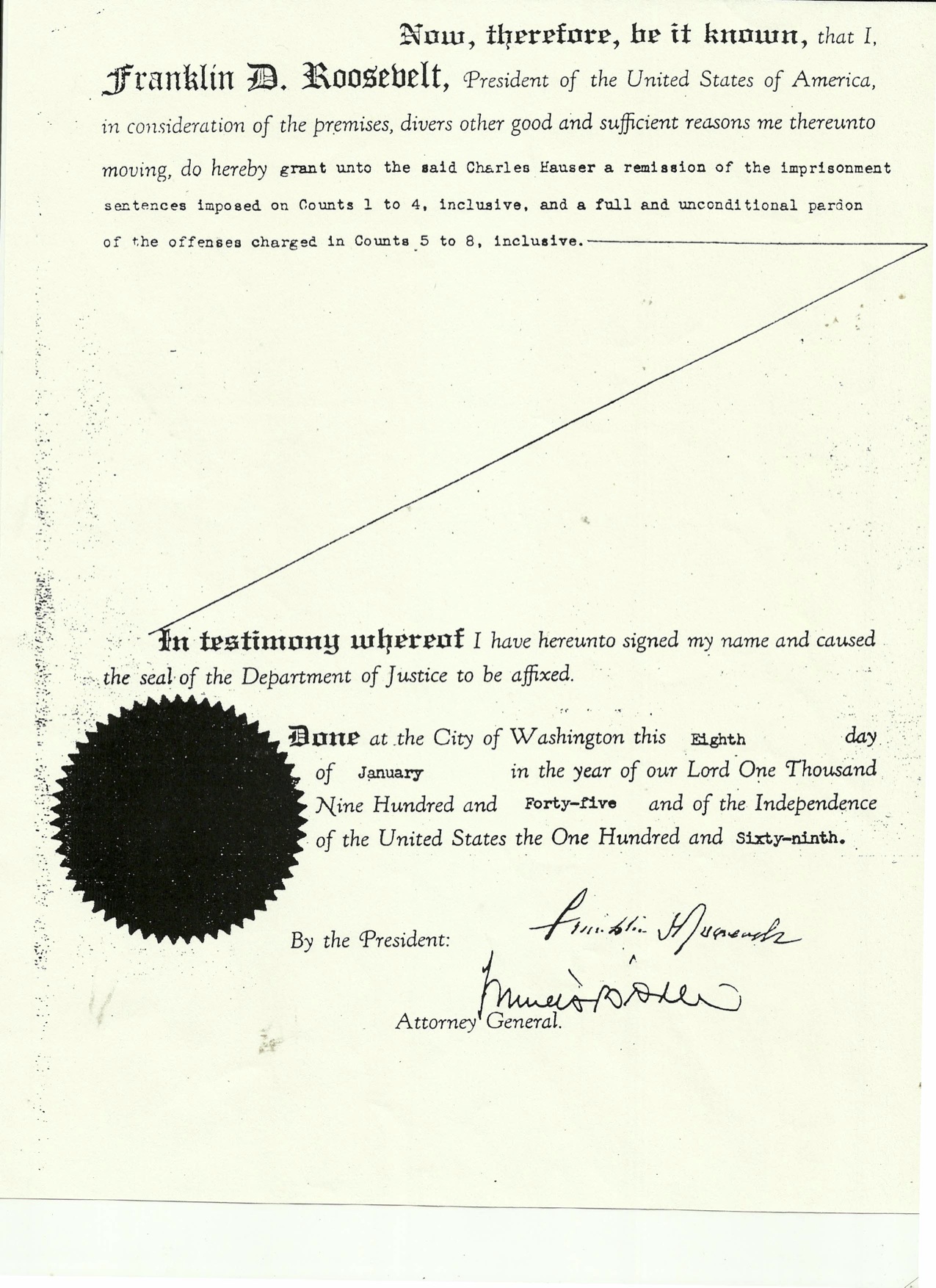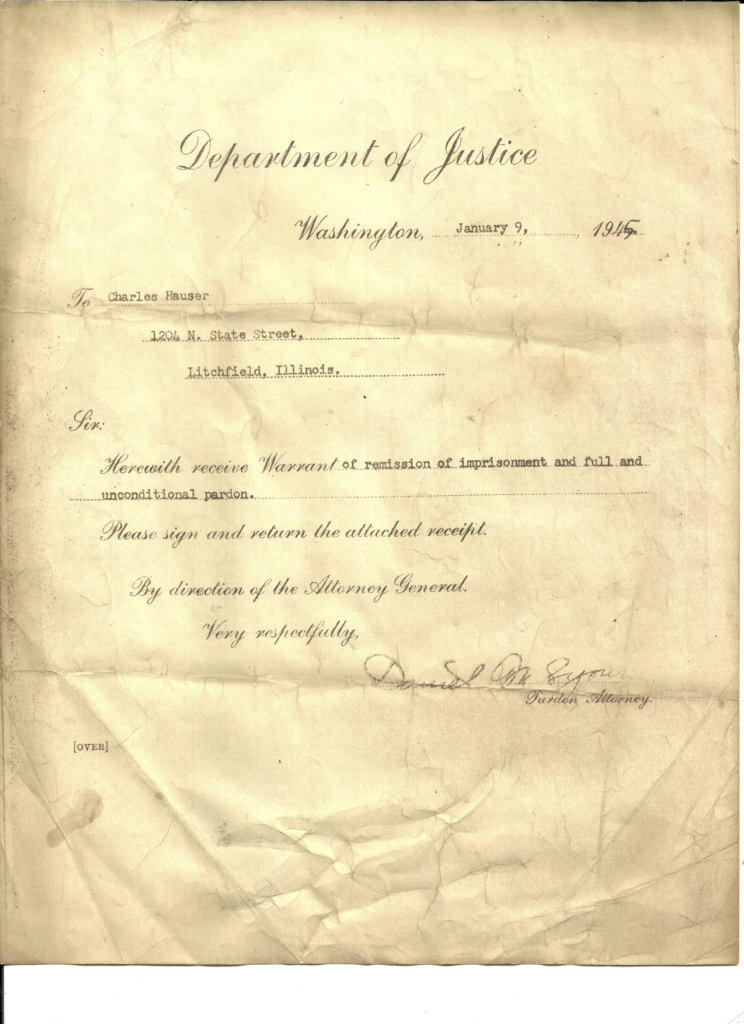This is the next part of my series of posts about Charles Hauser, the Defendant in United States v. Carolene Products. My first post looked at how a federal court struck down the Filled Milk Act in 1972, three decades after the Supreme Court famously upheld it. The second post looks at Hauser’s subsequent criminal conviction in 1943, which was affirmed by the Supreme Court. The third post analyzes the Milnot factory built that straddles the Missouri-Oklahoma border. The fourth post analyzes a subsequent pardon signed by President Roosevelt in in 1945.
I recently spoke on the phone with Charles G. Houser, the grandson of Charles R. Houser, the lead defendant in United States v. Caroline Products. (Interesting factoid, but Houser’s given name was Carl, but he changed it at some point during World War I because of anti-German sentiments in the United States.) Charles offered some more facts about his grandfather’s arrest, prosecution, appeal to the Supreme Court, and subsequent pardoning by President Roosevelt (you can learn more about his cousin Donna’s recollections here). Charles confirmed the family lore than his grandfather personally drove a milk truck across state lines into West Virginia to trigger a prosecution under the federal filled milk act. It seems his lawyers selected West Virginia because they thought it was a “friendly forum.” Charles’s father, Melvin, told him that they intended to make this a “test case.”
Hauser was represented by Jessie Climenko of the New York Firm of Gallup, Climenko, and Gould (now defunct). The family thought very highly of Climenko (though Climenko’s name was not on the briefs to the Supreme Court. Samuel H.Kaufman was). Before driving across the border, Hauser asked his lawyers if there was any chance he could jail time for driving this milk truck. The lawyers “blew” him off, and made a joke about it. Hauser notified the federal officials, and told them they would be driving across the state line. But, boy did they pick the wrong forum. The judge who arraigned him would not set bail, and remanded him to the custody of the marshall. The marshall did not want to put him in jail, so he made him his house guess. Ultimately, the lawyers apologized for laughing about the possibility of jail time. As I documented in this post, Hauser was sentenced to one year in federal prison. The chronology of the appeal to the Supreme Court, and his ultimate pardon is fascinating:
The case was argued at the Supreme Court on October 16 and 17, 1944. It was decided a three weeks later on November 6, 1944! That is fast, even for a 14 page SCOTUS opinion (Black and Douglas concurred in the result without an opinion). President Roosevelt signed the pardon on January 8, 1945. Barely two months later. That is swift justice! And, in another twist, Roosevelt died on April 12, 1945 barely three months. Roosevelt only commuted 25 sentences petitions in 1945, so this may have been one of the last commutations he granted.
I asked Charles G. Houser about his recollections of the pardon from President Roosevelt. He said that they were shocked. “We were Republicans.” I asked if he knew how the pardon came about. He replied, that Grandpa was packed up, and ready to go by train to surrender (it may have been to Levenworth). But, the law firm involved may have intervened with the Justice Department. He also had some recollection that a former federal judge who worked at the firm may have had a phone number at DOJ, but I’ll leave that alone. At some point, I want to submit a FOIA request to the DOJ pardon office to learn more. Here is a copy of the pardon, which I published earlier.  And here is a copy of the remission of imprisonment, which I received from Donna. Note that the year 1944 is printed, and someone scribbled over it 1945.
And here is a copy of the remission of imprisonment, which I received from Donna. Note that the year 1944 is printed, and someone scribbled over it 1945.
I will continue this thread with more thoughts from Hauser, as well as an interview with Wayne King, who was a plant manager at the Carolene Products facility in Seneca, MO from 1945-1978 (He is 91 years old now but sharp as a tack). Recall, this was the factory built on the border of Oklahoma and Missouri, with a brass line down the middle. The combined product–with both the vegetable oil and the skim milk–could not cross the brass rail.
